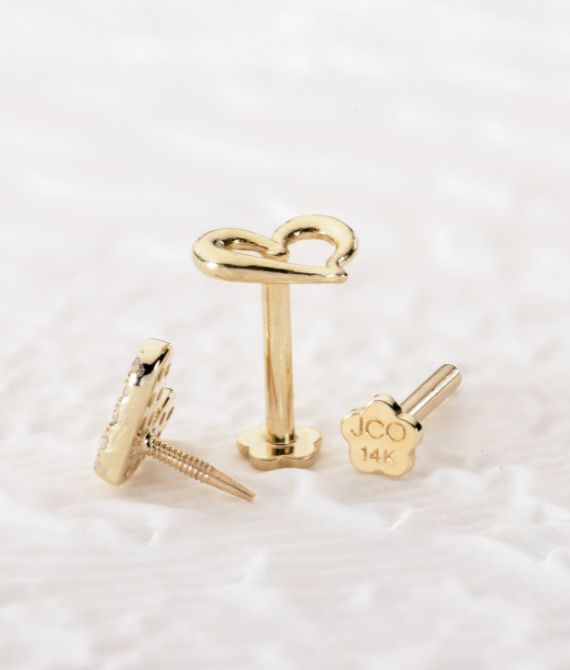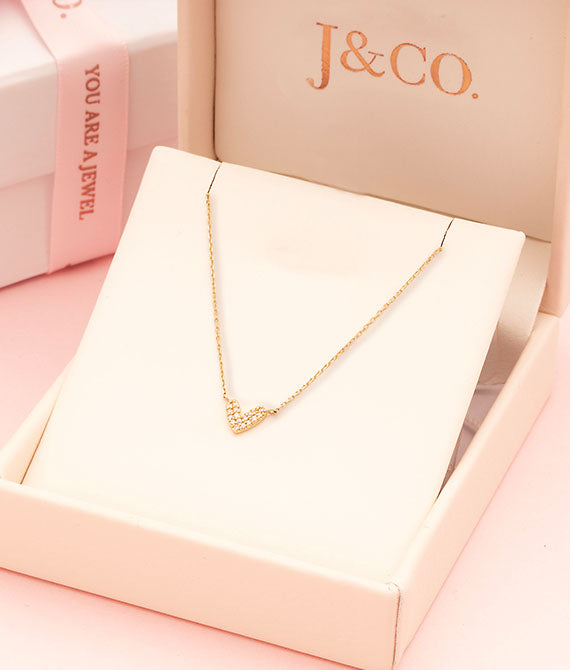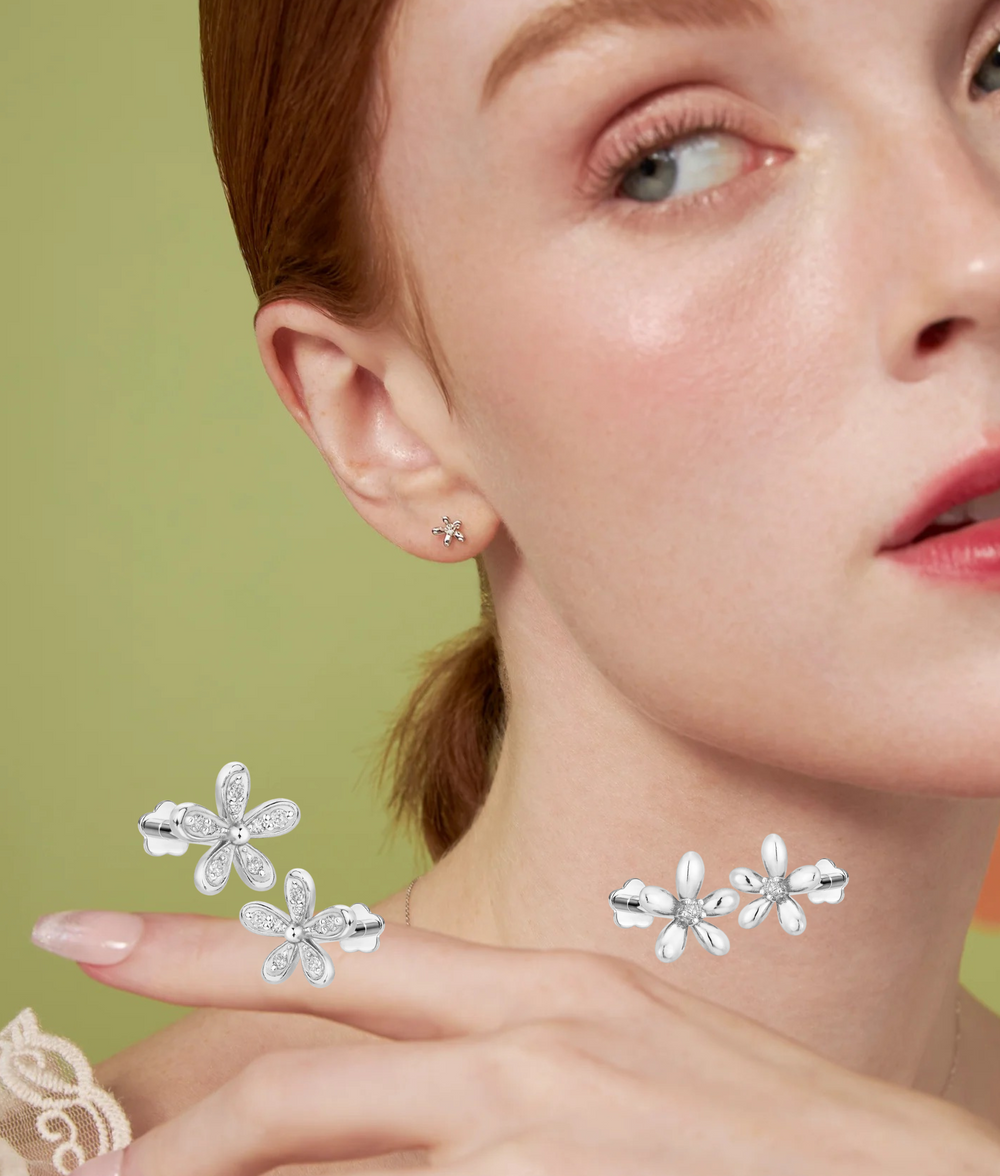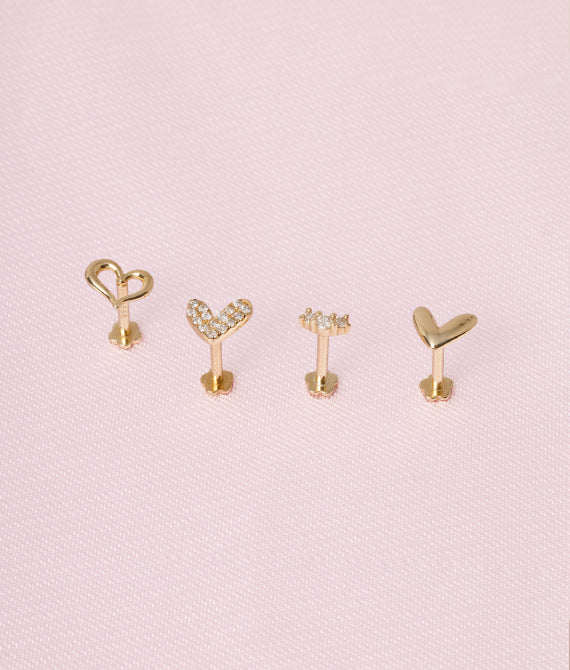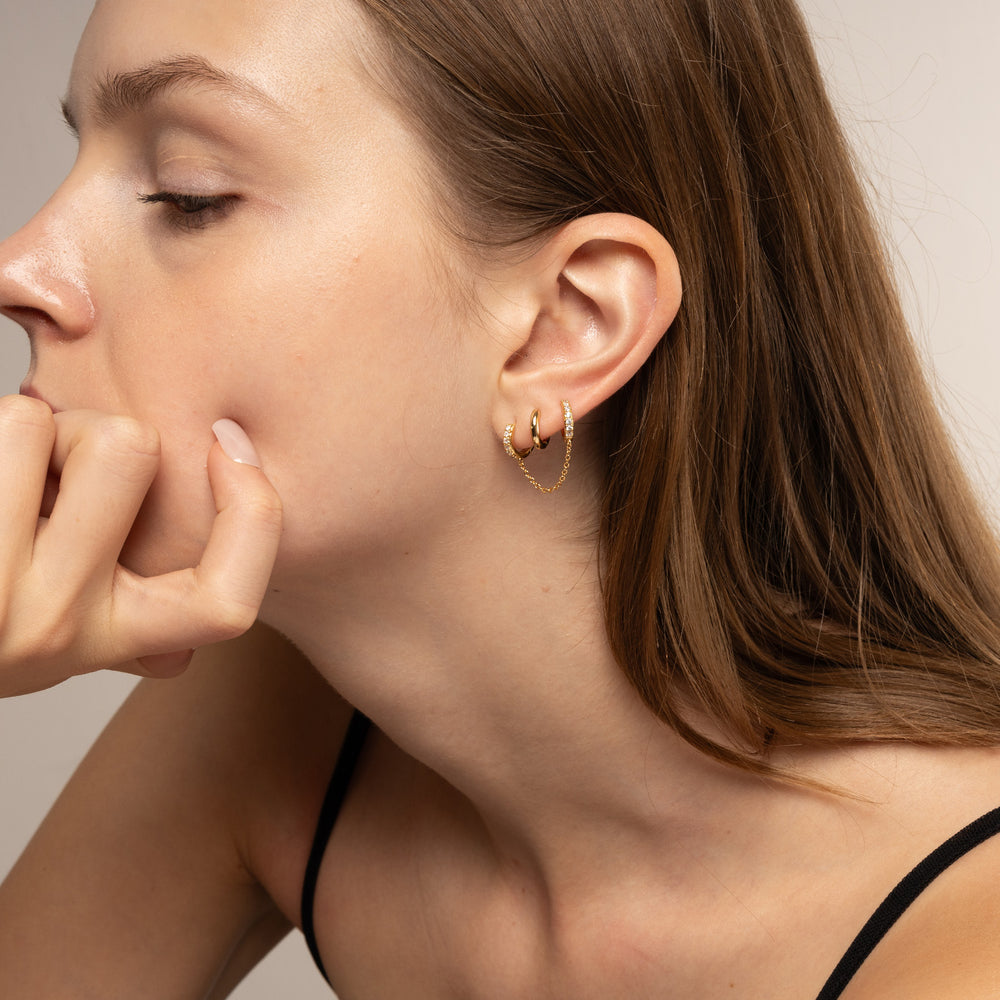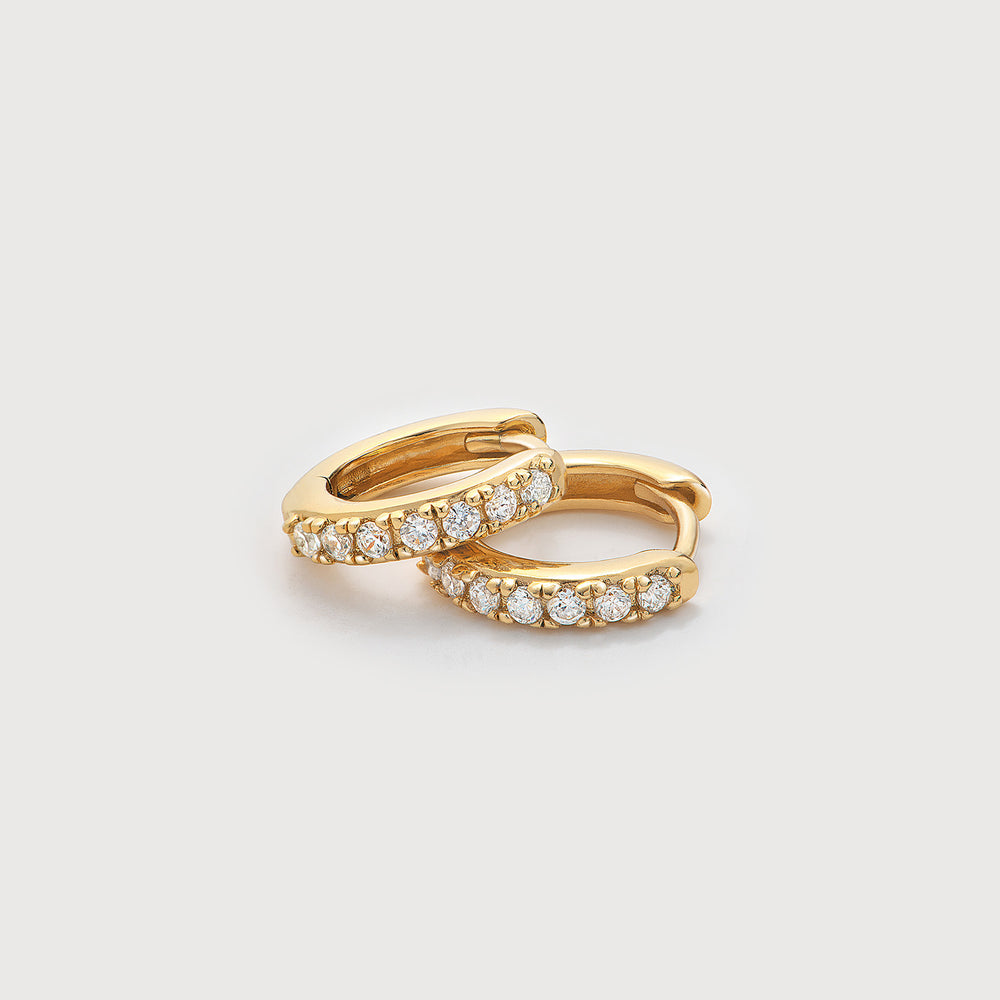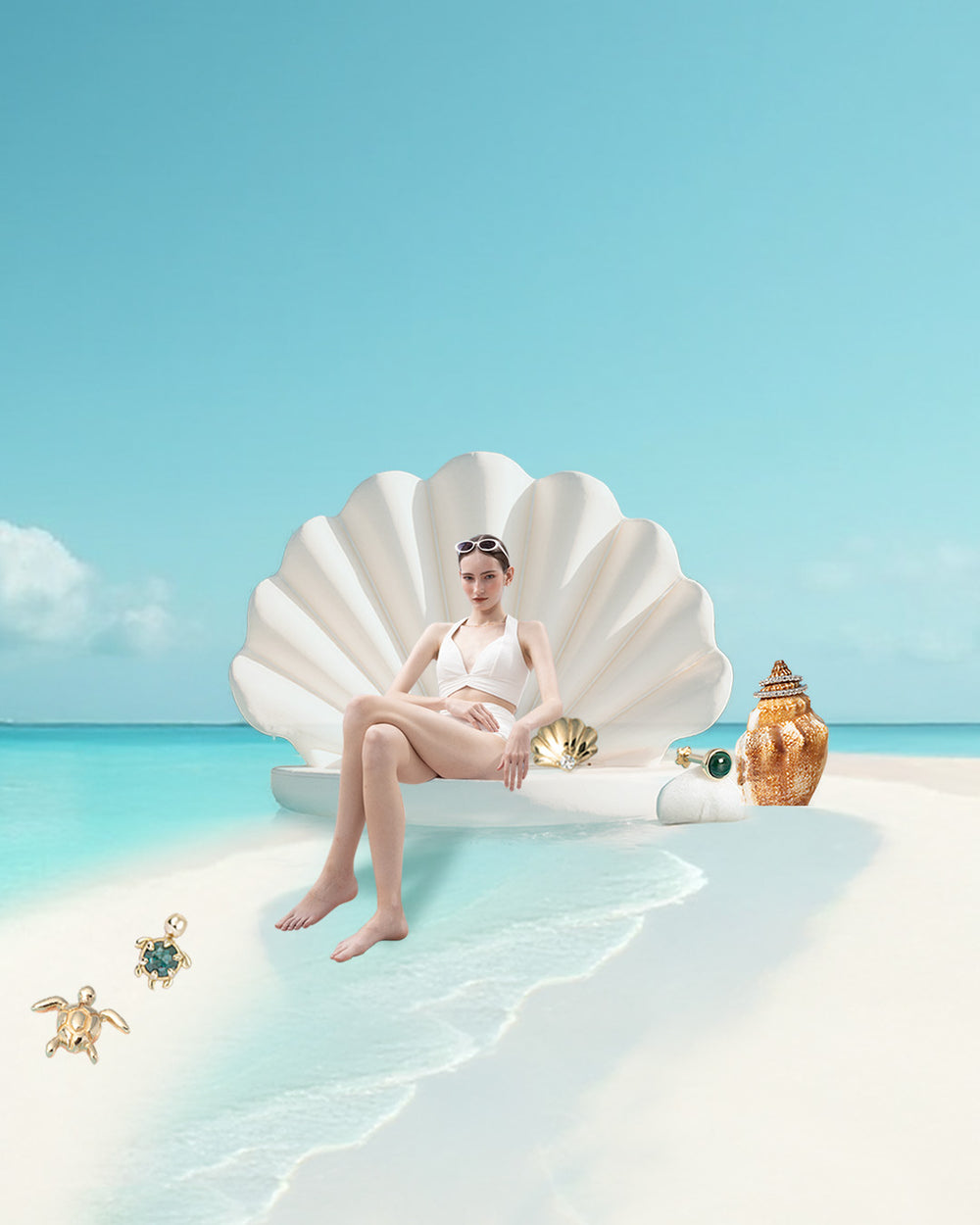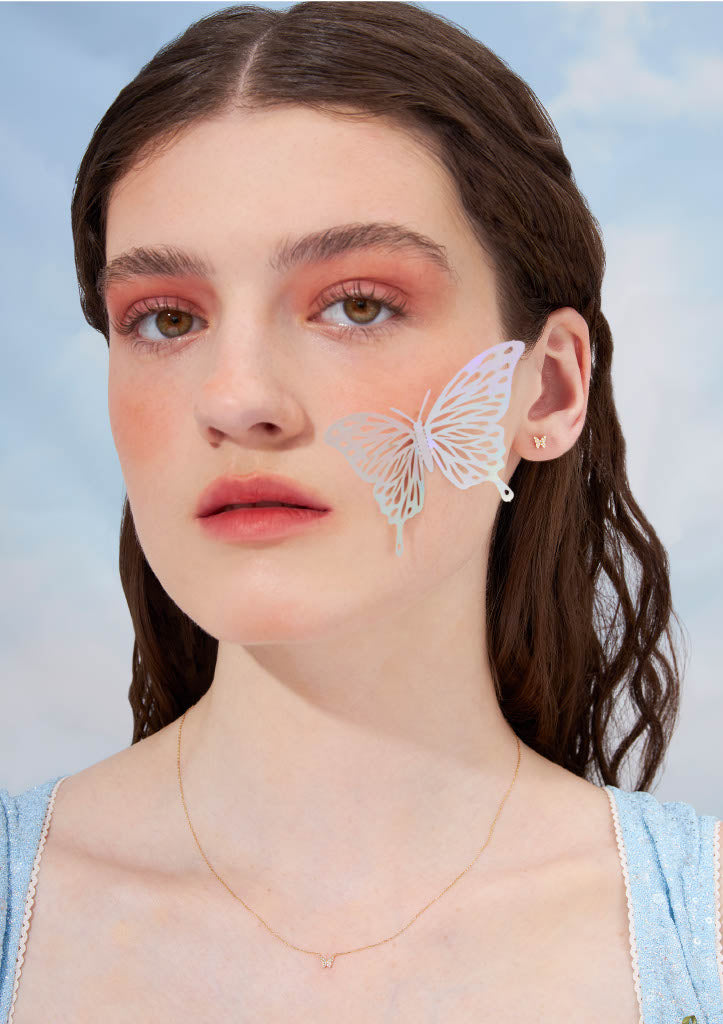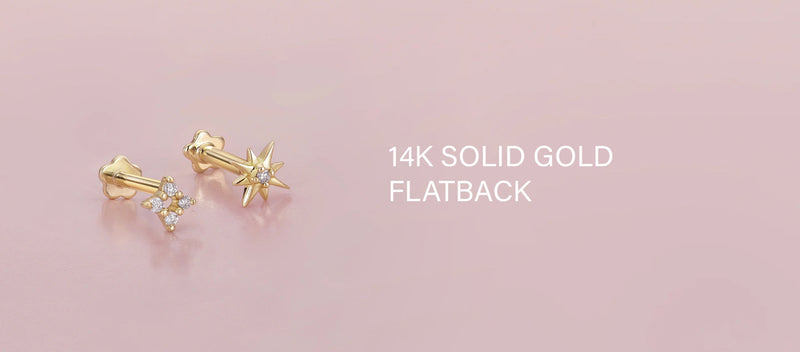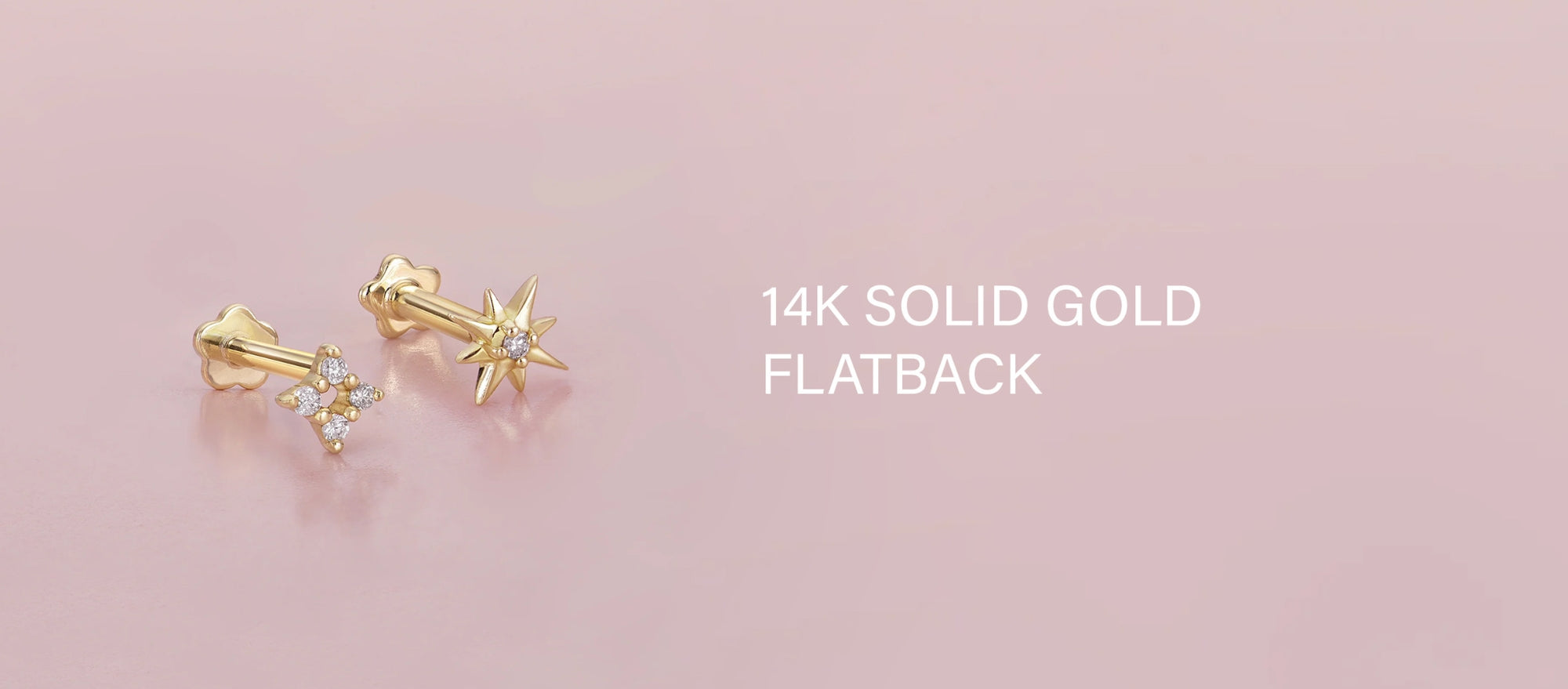Flache Ohrringe vs Schmetterlingsstecker: Kopf-an-Kopf-Vergleich
Finden Sie heraus, was besser ist: Flatback-Ohrringe oder Schmetterlingsstecker?
Flatback-Ohrringe werden schnell zur bevorzugten Alternative zu traditionellen Schmetterlingssteckern – und das aus gutem Grund. Da sie bündig auf der Haut sitzen, reduzieren Flatback-Ohrringe Reizungen, Hängenbleiben und Schmutzansammlungen, was sie ideal für frische Piercings und den täglichen Gebrauch macht.
Unten vergleichen wir Flatback-Ohrringe mit Schmetterlingssteckern, damit Sie entscheiden können, welcher Stil wirklich zu Ihren Ohren passt.
Flatback-Ohrringe vs. Schmetterlingsstecker — Kurzfassung
Flatback-Ohrringe punkten bei…
-
Komfort & Schlafkomfort: Flacher Scheibenrücken = keine Sticheleien, perfekt für Kopfhörer, Hüte und Seitenschläfer.
-
Sauberer, moderner Look: Kein klobiger Verschluss, der das Ohr schmückt; nur die Vorderseite glänzt.
-
Hygiene: Glatte Teile und keine hohle „Käsekammer“ bedeuten einfachere Reinigung und weniger Infektionen.
-
Sicherheit: Gewindeschrauben oder Druckstift-Vorderseiten schließen fest – schwerer zu verlieren, selbst beim Training.
Schmetterlingsverschlüsse bieten dennoch…
-
Schnelle Ein-/Aus-Kenntnis: Die meisten kennen die Push-and-Clutch-Methode.
-
Austauschbare Verschlüsse: Einfacher Wechsel von Standardverschlüssen.
Der Kompromiss: Schmetterlingsverschlüsse können drücken, pieksen, hängen bleiben und Schmutz einschließen. Flachrückige Ohrringe brauchen einen Moment, um das Anlegen zu lernen – aber einmal befestigt, sind sie bequemer, sauberer und bleiben den ganzen Tag an Ort und Stelle.
Im Folgenden beleuchten wir jeden Aspekt von flachrückigen Ohrringen vs. Schmetterlingsverschlüssen – von Komfort und Heilung über Hygiene, Stil und Kosten – damit Sie den besten Stil für Ihre Piercings wählen können.
Wie sie gebaut sind
Flachrückige Ohrringe: Verfügen über einen geraden Stift, der in einer glatten, flachen Scheibe endet, die bündig am Ohr anliegt. Die dekorative Vorderseite wird entweder mit einem innengewindeten Schraubverschluss oder einem gewindelosen Druckstift befestigt, der das Stück fest an seinem Platz hält.
Schmetterlingsverschlüsse: Die dekorative Vorderseite sitzt direkt auf einem geraden Stift. Ein separater, schmetterlingsförmiger Reibungsverschluss wird dann aufgeschoben und greift mit Federkraft eine kleine Kerbe, um den Ohrring zu sichern. Der Verschluss ist abnehmbar und mit Standard-Schmetterlingsverschlüssen austauschbar.
Ästhetische Anziehungskraft
Flachrückige Ohrringe: Minimalistisch und modern sitzen Flachrückige nahtlos auf der Haut und schaffen aus jedem Blickwinkel einen klaren Look. Sie sind besonders beliebt für Knorpel, Ohrläppchenstapel und mehrere Piercings, bei denen klobige Verschlüsse das Ohr überladen können. Da die flache Scheibe bündig hinter dem Ohrläppchen liegt, bleibt sie aus den meisten Blickwinkeln unsichtbar, sodass die dekorative Vorderseite im Mittelpunkt steht.
Schmetterlingsverschlüsse: Traditionelle Schmetterlingsverschlüsse erfüllen ihren Zweck, sind aber nicht unauffällig. Die klobige Klemme steht hinter dem Ohr ab und unterbricht einen sauberen, einheitlichen Look. Bei eng gestapelten Ohrringen können Schmetterlingsverschlüsse mit benachbarten Stücken überlappen. Für Minimalisten und stilbewusste Stapler ist dieses visuelle Durcheinander ein Ausschlusskriterium.
Komfort
Flachrückige Ohrringe: Flachrückige Ohrringe liegen bündig auf der Haut auf und vermeiden das Stechen und Drücken, das bei traditionellen Ohrrückseiten auftritt. Ihr glattes, flaches Design macht sie ideal zum Schlafen, Tragen von Kopfhörern oder sogar beim Sport – keine schmerzenden Stellen mehr hinter den Ohren.
Schmetterlingsverschlüsse: Klassische Schmetterlingsverschlüsse können bei längerem Tragen unangenehm werden. Die Metallklemme drückt hinter dem Ohr auf die Haut – besonders wenn man auf der Seite liegt oder enge Hüte, Helme oder Kopfhörer trägt. Mit der Zeit verursachen dieser Druck und die Reibung spürbare Schmerzen, Rötungen oder Schwellungen, wodurch ein stylischer Stecker zu einer lästigen Reizung wird. Seitenschläfer wachen oft mit empfindlichen Ohrläppchen auf, und der freiliegende Stift kann sogar den Hals pieksen. Für ganztägigen, nächtlichen Komfort und Hygiene sind Schmetterlingsverschlüsse nicht ideal.
Tragekomfort
Flatback-Ohrringe: Das Sichern eines Flatbacks bedeutet, die dekorative Vorderseite auf einen Stift zu schrauben (oder zu drücken), der in einer flachen Scheibe endet. Für Anfänger oder Personen mit langen Nägeln kann das Ausrichten der Gewinde etwas fummelig sein. Obwohl es eine kleine Lernkurve beim Anlegen gibt, sind Komfort und Stil den Aufwand absolut wert. Ein schneller Trick ist, die dekorative Vorderseite mit etwas Klebemasse zu fixieren, während man die Oberseite einschraubt oder andrückt.
Schmetterlingsstecker: Bewährt und zuverlässig, sind Schmetterlingsstecker einfach einzusetzen – perfekt für eine schnelle Schmucklösung. Die meisten kennen die Routine: Den Stift durch das Ohrläppchen schieben und die Schmetterlings-Kupplung drücken, bis sie in den Kerben greift. Das geht in der Regel schneller, obwohl man den Stift sauber zwischen die Flügel der Kupplung führen und das winzige Rückteil nicht fallen lassen muss.
Hygiene
Flatback-Ohrringe: Mit einer sauberen, schlanken Struktur sind Flatbacks weniger anfällig dafür, Schmutz oder Ablagerungen einzufangen. Der Stift und die Rückseite sind glatt und minimalistisch, was die Reinigung und Pflege erleichtert. Außerdem gibt es Flatbacks in verschiedenen Stiftlängen, sodass Sie die „genau richtige“ Passform finden können, die Reibung und Ablagerungen bei heilenden oder langfristigen Piercings reduziert.
Schmetterlingsstecker: Die Schmetterlings-Kupplung hinterlässt einen kleinen Hohlraum, der leicht Öl, Schweiß und Bakterien sammeln kann. Diese Spalten erschweren die Reinigung und können besonders bei empfindlichen oder neuen Piercings zu Infektionen führen. Mit der Zeit können sich Ablagerungen oder sogenannter „Ohrenschmalz“ ansammeln, was regelmäßige, gründliche Reinigungen erfordert.
Sicherheit
Flatback-Ohrringe: Flatbacks schließen auf zwei Arten: Schraubverschluss (innengewindet) oder Steckverschluss. Der Schraubverschluss dreht sich wie eine kleine Schraube in den Stift und bietet die sicherste Verriegelung. Steckverschlüsse basieren auf Reibung und sitzen ebenfalls fest, können sich aber bei starker Bewegung schneller lockern.
Schmetterlingsstecker: Die Reibungs-Kupplung des Schmetterlings kann sich mit der Zeit lockern, besonders bei häufigem Tragen und Abnehmen. Haare, Schals oder Kleidung können leicht an der Rückseite hängen bleiben, was zu verlorenen Ohrringen oder sogar gerissenen Piercings führen kann.
Fazit: Warum Flatback-Ohrringe den Tag gewinnen
Wenn es um Komfort, Hygiene, Stil und Sicherheit geht, stechen Flatback-Ohrringe eindeutig als die bessere Alltagsoption hervor, besonders für neue, heilende oder empfindliche Piercings. Ihre bündige Passform, das schlanke Design und die sichere Rückseite machen sie perfekt für moderne Ohr-Stacks und das Tragen rund um die Uhr. Während Schmetterlingsstecker ihren Platz haben, machen ihre klobigere Bauweise und hygienischen Nachteile sie weniger geeignet für diejenigen, die Wert auf Komfort, Ästhetik legen oder einfach nicht jeden Tag die Ohrringe entfernen wollen. Flatbacks sind aus gutem Grund die erste Wahl.
